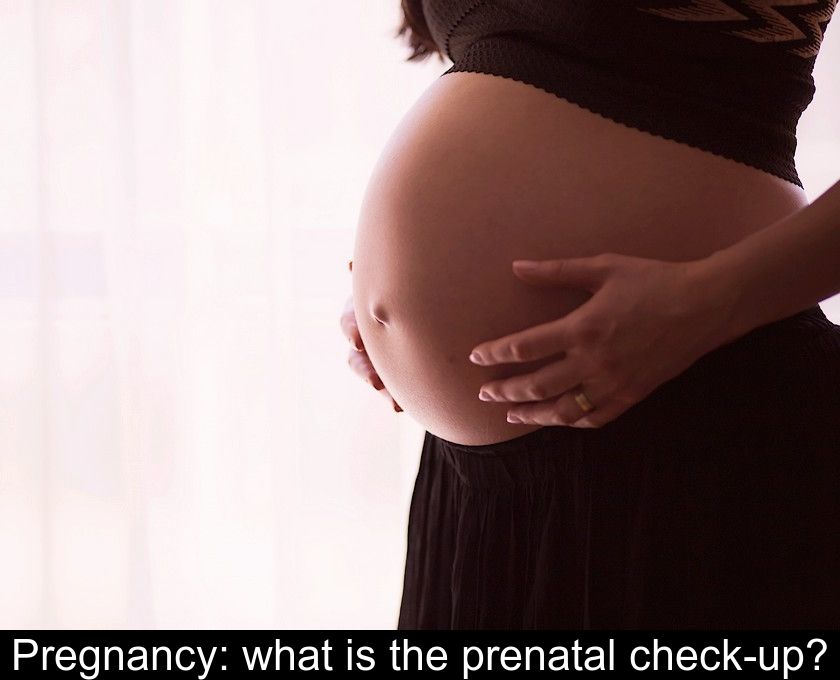Pregnancy: What Is The Prenatal Check-up?
The prenatal check-up refers to all the examinations that a pregnant woman should undergo for the proper development of her pregnancy. This check-up allows not only to control the growth of the fetus, but also to detect a serious illness of the child during the pregnancy. Here is everything you need to know about these medical examinations, some of which are mandatory and others optional.
What does this health check-up consist of?
The prenatal checkup consists of several routine examinations for prevention purposes.
This first step, also called prenatal screening, is offered to all expectant mothers.
In the second stage, if an abnormality is suspected in the fetus, further tests are recommended: this is called prenatal diagnosis.
What are the tests to be performed?
The purpose of the prenatal check-up is to detect various anomalies in the fetus.
Prenatal screening consists first of all of checking the fetal growth, vitality and morphology during the 3 ultrasounds scheduled:
- between the 11th and 13th week of pregnancy
- between the 21st and 24th week
- and finally between the 32nd and 34th week.
During your pregnancy, the screening for Trisomy 21 will also be offered. It is not mandatory, but it is recommended because Trisomy 21 is the most common genetic disease.
This screening is based on calculating a predictive score based on the measurement of the fetal neck at the first ultrasound, the mother's age and certain blood markers. Depending on the result, other tests will be proposed.
Other medical examinations are mandatory for pregnant women, in particular a blood test to detect :
- infections that can cause fetal malformations such as rubella or toxoplasmosis
- viruses and bacteria that can contaminate the fetus such as syphilis, HIV and hepatitis B and C.
To note: regarding the Covid-19 virus, vaccination is recommended for all pregnant women. Indeed, this virus can cause the mother a severe infection and can promote premature delivery.
Another mandatory test is to detect a possible blood incompatibility between the fetus and the mother.
When their blood types are not compatible, it can cause anemia in the fetus by the passage through the placenta of maternal antibodies directed against the child's red blood cells.
When is prenatal diagnosis performed?
Prenatal diagnosis concerns about 3% of pregnancies in France. It is not systematic because it complements the standard prenatal workup when a fetal anomaly is suspected.
The purpose of these complementary examinations is to confirm the diagnosis of fetal affection and to give the future parents the possibility of performing a medical termination of pregnancy.
In France, there are 7,000 cases of medical termination of pregnancy each year, when the fetus is affected by a particularly serious and incurable genetic disease or congenital malformation.
On the other hand, when there is a medical or surgical treatment of the detected pathology, it is possible to continue the pregnancy.
What do these additional examinations consist of?
Prenatal diagnosis includes a follow-up ultrasound, performed by a referring practitioner, to confirm the diagnosis and assess the prognosis. In addition, an MRI is sometimes requested as a supplement.
This diagnosis most often includes an analysis of the fetal chromosomes, looking for trisomy or another genetic abnormality such as a missing chromosome end or, conversely, an extra chromosome end.
This analysis of the fetal chromosomes can be performed before the 14th week of pregnancy by a biopsy of the trophoblast (the future placenta) or, from the 15th week, by amniocentesis i.e. sampling of amniotic fluid using a needle.
In addition, Trisomy 21 can now also be screened from a maternal blood sample. Fetal DNA is analyzed that comes from the placenta and circulates in small amounts in the mother's blood.
A prenatal diagnosis does not necessarily mean that the pregnancy must be terminated. In some cases, it is possible to treat the problem detected in utero, including fetal anemia, pulmonary effusion or even spina bifida.













